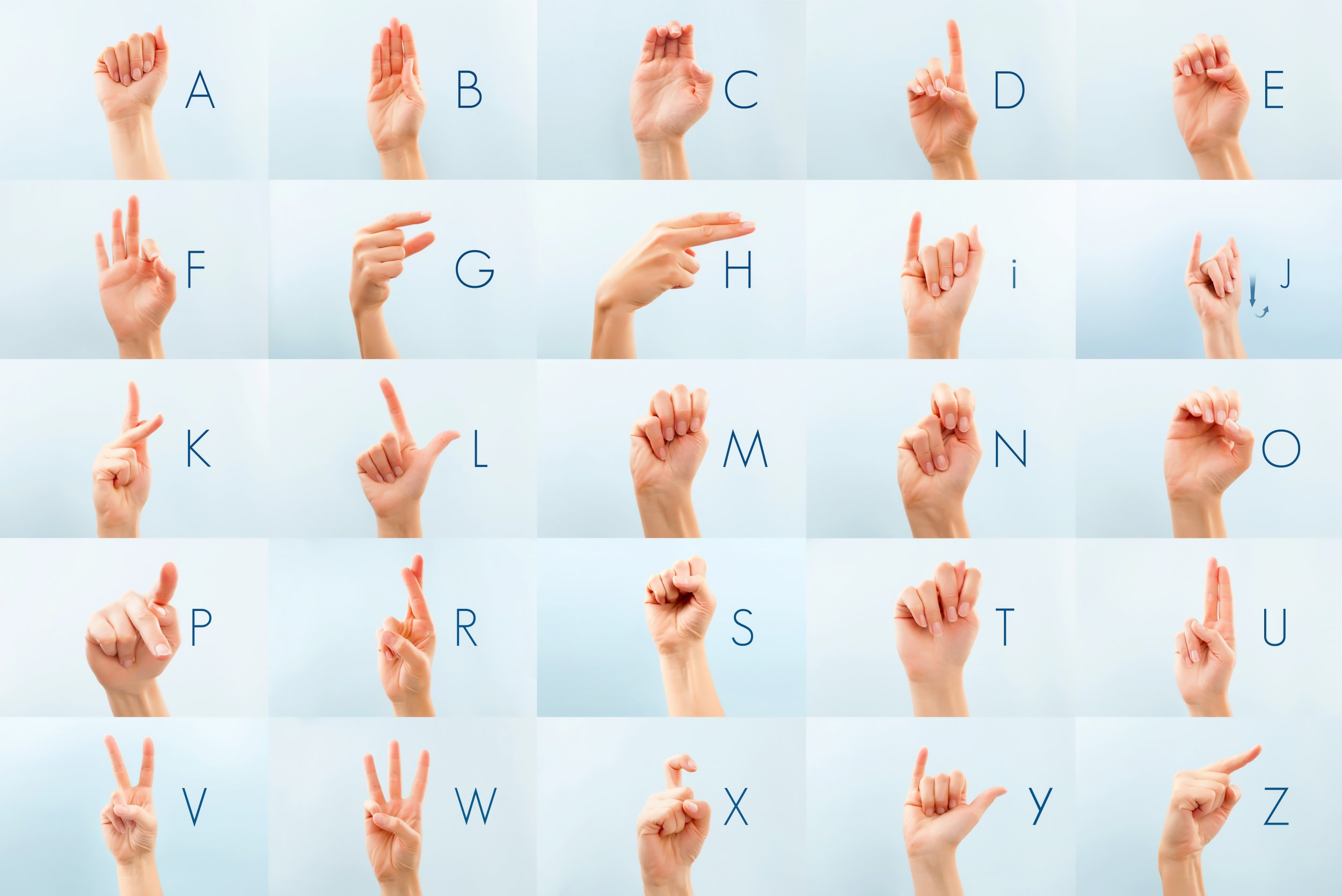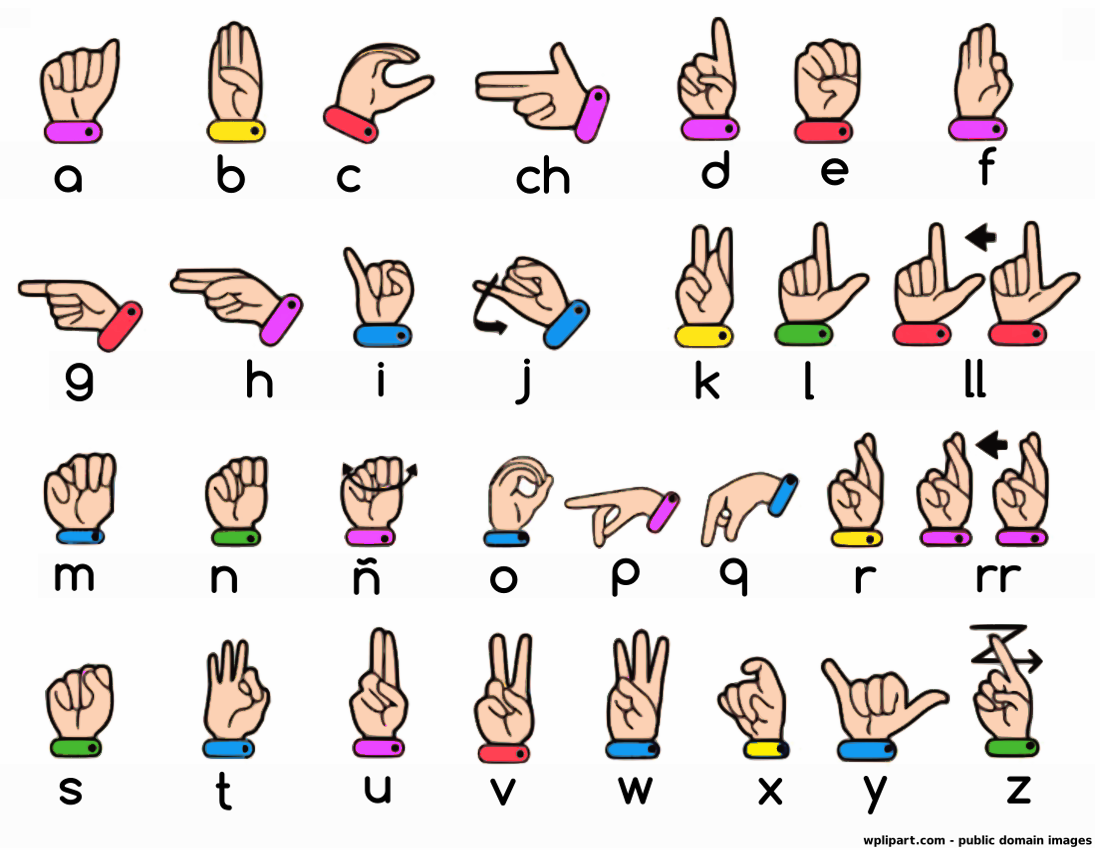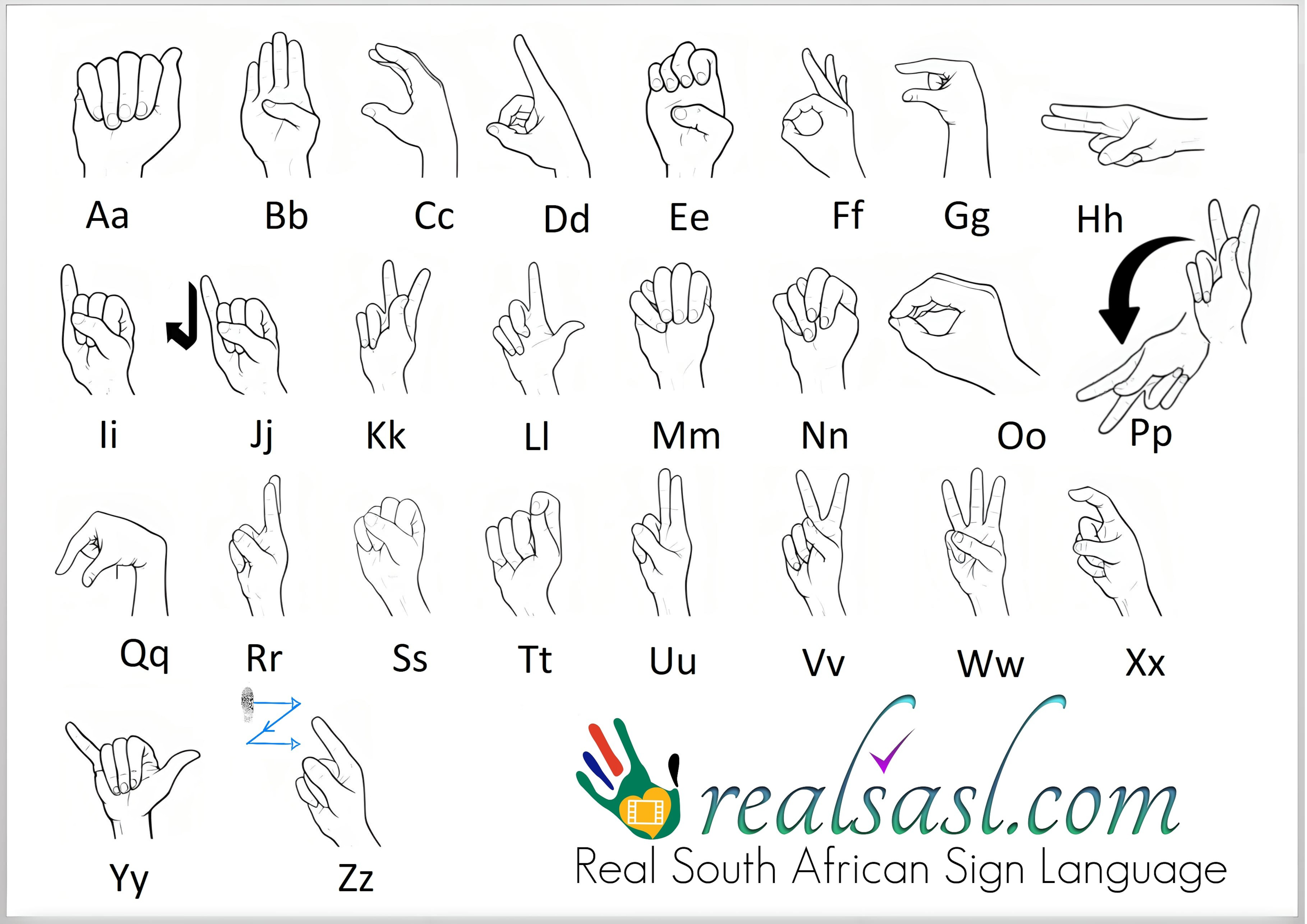Sign Language Alphabets in the World
American Sign Language (ASL)
The most used sign language in the world is the American Sign Language. Naturally, it is the dominant sign language used in the United States of America.
It is a complete and detailed sign language that uses both manual and nonmanual features. Nonmanual features or nonmanual signals are elements of sign language that do not include hand movements such as facial expressions, eyebrow movement, head tilting and body shifting. They are used to modify verbs, adjectives and other adverbs.
As we stated before, ASL has the same alphabet as English, but it is descended from Old French Sign Language. So the words are not expressed the same way they are expressed in the spoken language of English.

French Sign Language (LSF)
French Sign Language, or Langues des Signes Française in French, is the sign language of deaf communities in France or in French-speaking parts of Switzerland.
There is an incredible story behind LSF. In 1760, Abbé Charles Michel de l'Epée was the teacher of deaf twin sisters. The sisters communicated with each other through signs and eventually, Abbé learned the signs. Then he founded the National Institute for the Deaf. But the LSF today was a result of the language progressing step by step throughout the years.
Facial expressions are significant. For example, frowning indicated the posing of a question.
Time can be indicated by the movement of the hands. The back of the shoulder signals the past and the front of the person signals the future.
The language continues to grow every day, adding new words and being influenced by the French language.

British Sign Language(BSL)
British Sign Language is a rich language that is a combination of body language, facial expressions and hand movement.
Historically, records of sign language can be seen in the 15th century. Until the 1940s, sign language was discouraged in schools and the students were forced to lip read. After many years of discrimination, BSL was officially recognized by the British government as a language in 2003.
Different dialects of BSL exist in different regions. For example, some signs from Scotland might not be understood by a deaf person in England. BSL is also different from ASL or Irish Sign Language, even though they have similarities.
BSL has its own grammar and a particular syntax. Which is how complex sentences are formed. It uses a topic-comment system where the topic is established, then the comment is made allowing a deeper conversation.
BSL also shares its sign language with Australian Sign Language and New Zealand Language, forming the BANZSL Language Family, as we stated before.
Spanish Sign Language
Even though there are multiple dialects and sign languages in Spain like Catalan Sign Language and Valencian Sign Language, Spanish Sign Language is used by the majority of the deaf community in Spain. Still, these languages are very similar.
Spanish Sign Language also does not form sentences like the spoken language of Spanish, which is the case with most sign languages. It is related to LSF Family and can be traced back to the 16th century. However, Spanish did take the alphabet of Spanish spoken language which originated from the Latin alphabet.

Chinese Sign Language
Chinese Sign Language has two dialects, a southern dialect that is influenced by LSF and a northern dialect that is influenced by ASL. But generally, CSL is heavily influenced by the Chinese spoken language.
Information is conveyed through facial expressions alongside hand and body movements. The spelling is similar to Pinyin but Chinese fingerspelling was founded before it.
The begging of a sign language in China can be traced back to 1887 when the first school for the deaf was established. Then, schools and farms with deaf individuals allowed this sign language to develop and become the language it is today.
South African Sign Language
South African Sign Language is not the only manual language to be used in South Africa but it is being promoted as the primary language.
ASL is also a language used in South Africa and we can see the influence of ASL on South African Sign Language.
South Africa is one of the few countries that officially recognize a sign language. They also have a formal school curriculum for sign language.
In general, verbs are signed last. Adjectives and adverbs always come after the nouns and verbs. Signs do not change from tense to tense. Tenses are indicated with the time sign at the beginning. Even though there are rules to the South African Sign Language, more research is needed to understand the details of this language that developed over many years.

Korean Sign Language
The Korean Sign Language (KSL) alphabet is called 한국 수화 철자 (Hanguk Suhwa Cheolja) or 한국 수화 알파벳 (Hanguk Suhwa Alphabet) in Korean. It consists of handshapes that represent the 31 consonant and vowel sounds of the Korean language.






Comments
Post a Comment